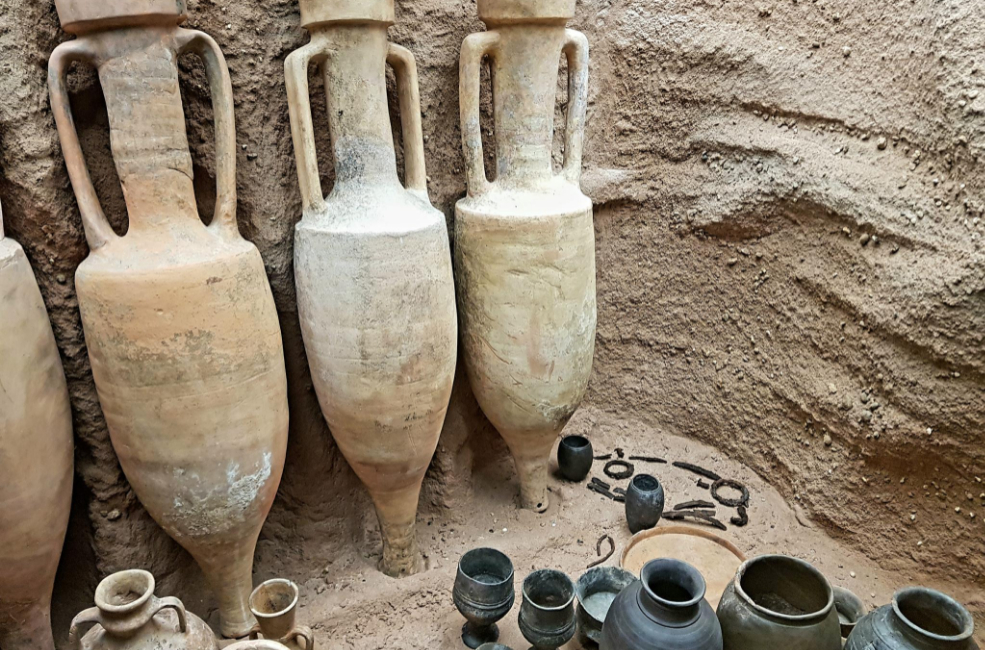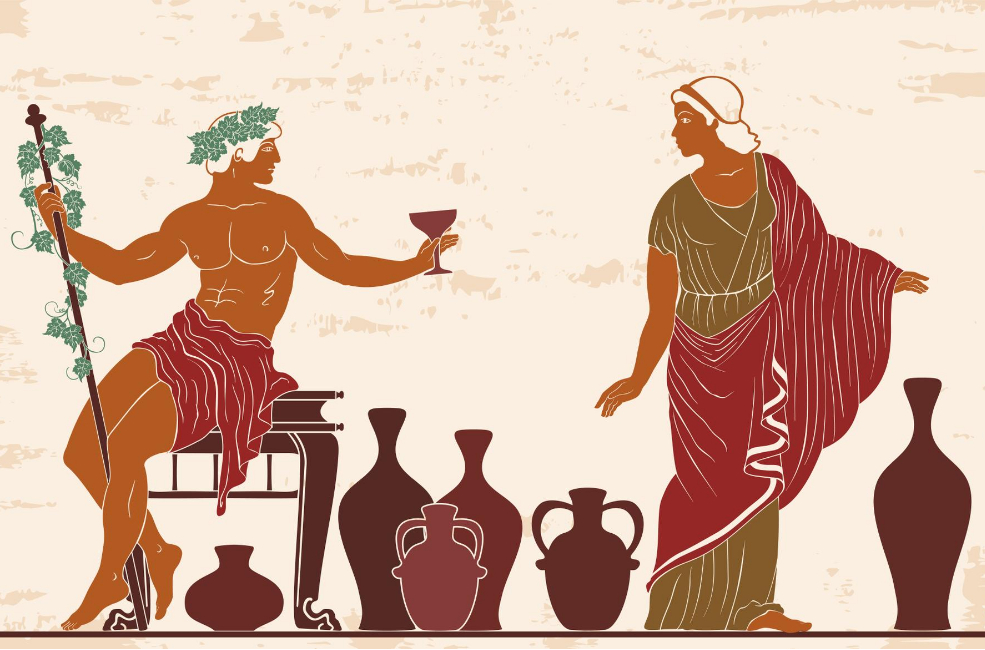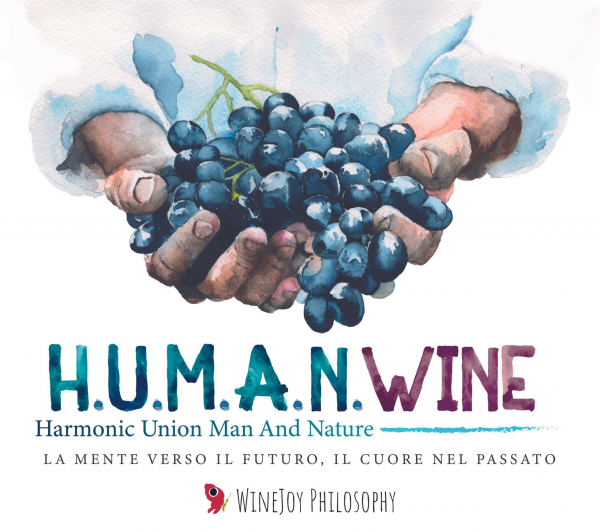
One of the oldest living beings in nature is the wild vine that appears on earth 60 million years ago, while the wine one, “Vitis Vinifera” makes its appearance “only” 1 million years ago.
The first serial vinification was found in Armenia in about 4,100 B.C. with the discovery of the oldest existing wine cellar.
Before the 3rd cent. D.C. the terracotta amphorae were the primary containers for wine but also for oil, fruit, garum (fish sauce) and dates.
Their tapered shape was well suited to the positioning in the ground and in the holds of the ships carrying them throughout the empire. They had a capacity of about twenty liters, closed with cork or wood stoppers and sealed with pitch, resin, pozzolana, lime and chalk. It is thought that a ship used only for the transport of wine, could contain between 2000 and 3000 amphorae which were equipped with a sort of label (pittacium) that indicated the name of the producer, the origin and the name of the consul in charge. Later it was thought to have a hermetic seal that allowed the wine to mature in an oxygen-free environment.
“Therefore, bring me the smoky Falerno of the ancient consul and untie the laces to the amphora of Chios”invokes Tibullus on the day of Ambarvalia.
Viticulture spread from Mount Ararat (in the Caucasus) to Mesopotamia, the Middle East, the Mediterranean and finally to Northern Europe. The first varieties were selected in the area from the Caucasus to Egypt called “fertile crescent” which also included Mesopotamia (between the Tigris and the Euphrates).
From the “fertile crescent” the vine has come to the Mediterranean where Greece has taken on a very important role in the transmission of the wine civilization. From the VIII sec. A.C. the Greeks brought the varieties Aminee and Apiane. Among the Aminee we remember the Aglianico (that is, the Ellenicum), the Falerna, the various Greco, the Fiano, La Falanghina, the Riesling Renano, the Chassellas and the Meunier. Among the Apiane varieties are mentioned the large and numerous families of Moscati and Malvasie. At that time the varieties were many, Pliny says that they were as numerous as the grains of sand of a beach.
Greek wine was also exported to Egypt, along the coasts of the Black Sea and from the 5th century B.C. also to the Danube region.
As for viticulture in Italy, some historians date it back to around the first millennium BC, during the first journeys of the Greeks.
It was the Romans who created that great and important movement that would make wine an institution throughout Europe. But already before, thanks to the huge diffusion of good wine concentrated in our peninsula, Italy was called Enotria tellus, that is the land of wine. The wine of antiquity was very different from what we drink today, it was a wine to which was added a large amount of aromas and thinners, including sea water, spices, honey and resin. Pure wine was difficult to drink especially when it was aromatized with herbs and other concoctions, it was therefore necessary to learn the art of cutting wine with water, which for the Greeks was an index of the level of civilization.


